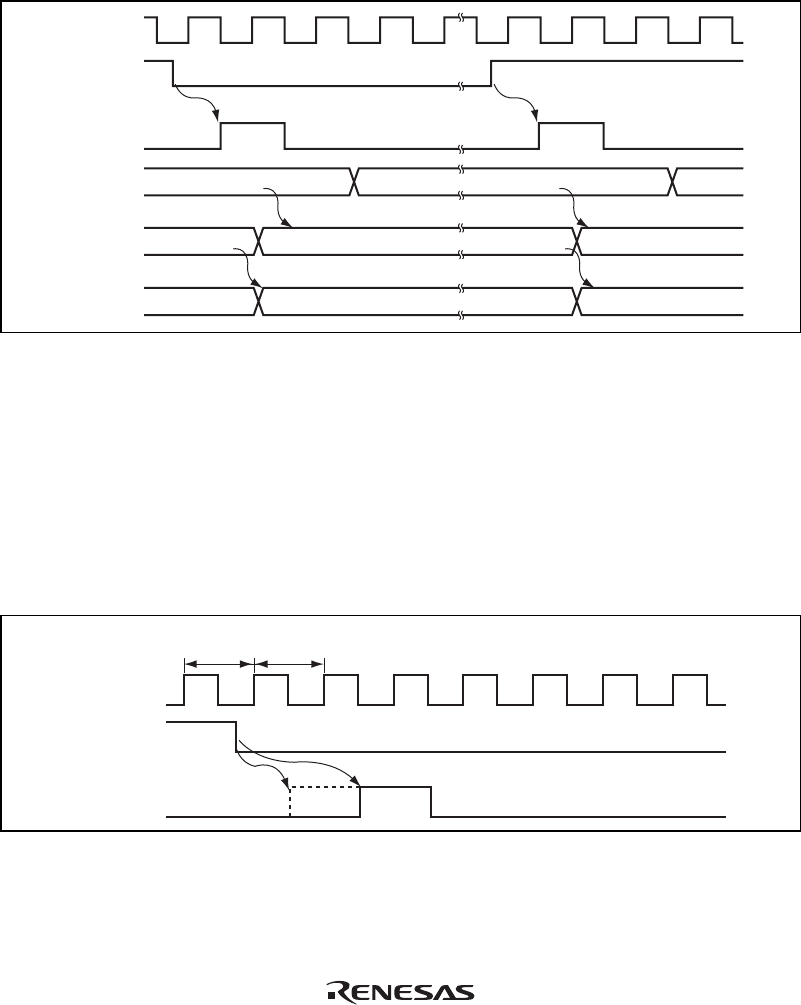
Rev. 1.00, 05/04, page 173 of 544
9.5.5 Buffered Input Capture Input Timing
ICRC and ICRD can operate as buffers for ICRA and ICRB, respectively. Figure 9.9 shows how
input capture operates when ICRC is used as ICRA's buffer register (BUFEA = 1) and IEDGA and
IEDGC are set to different values (IEDGA = 0 and IEDGC = 1, or IEDGA = 1 and IEDGC = 0),
so that input capture is performed on both the rising and falling edges of FTIA.
Input capture
signal
φ
FTIA
FRC
ICRA
ICRC
n n + 1 N + 1N
Mn
mM
n
M
N
n
Figure 9.9 Buffered Input Capture Timing
Even when ICRC or ICRD is used as a buffer register, its input capture flag is set by the selected
transition of its input capture signal. For example, if ICRC is used to buffer ICRA, when the edge
transition selected by the IEDGC bit occurs on the FTIC input capture line, ICFC will be set, and
if the ICICE bit is set at this time, an interrupt will be requested. The FRC value will not be
transferred to ICRC, however. In buffered input capture, if either set of two registers to which data
will be transferred (ICRA and ICRC, or ICRB and ICRD) is being read when the input capture
input signal arrives, input capture is delayed by one system clock (φ). Figure 9.10 shows the
timing when BUFEA = 1.
Input capture
signal
FTIA
φ
T
1
T
2
CPU read cycle of ICRA or ICRC
Figure 9.10 Buffered Input Capture Timing (BUFEA = 1)


















